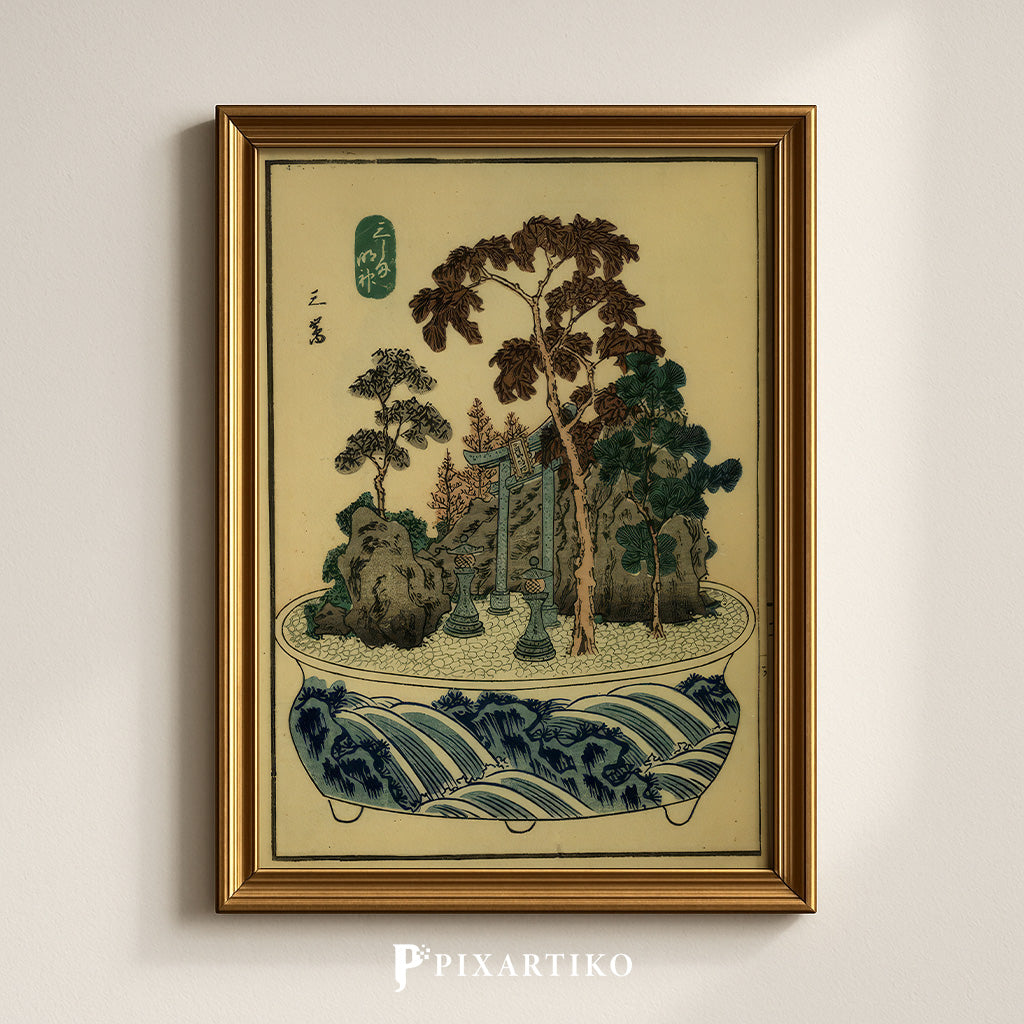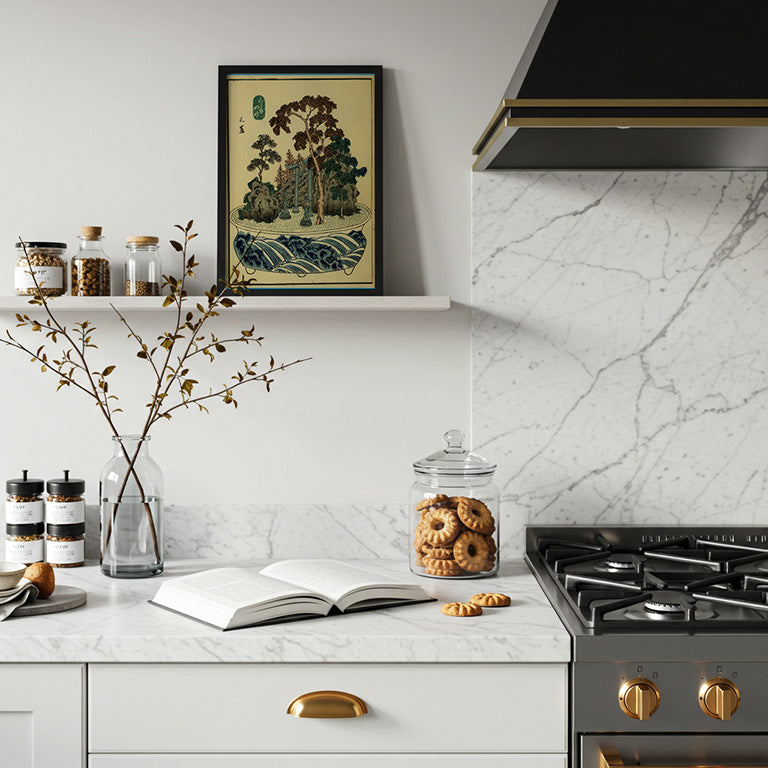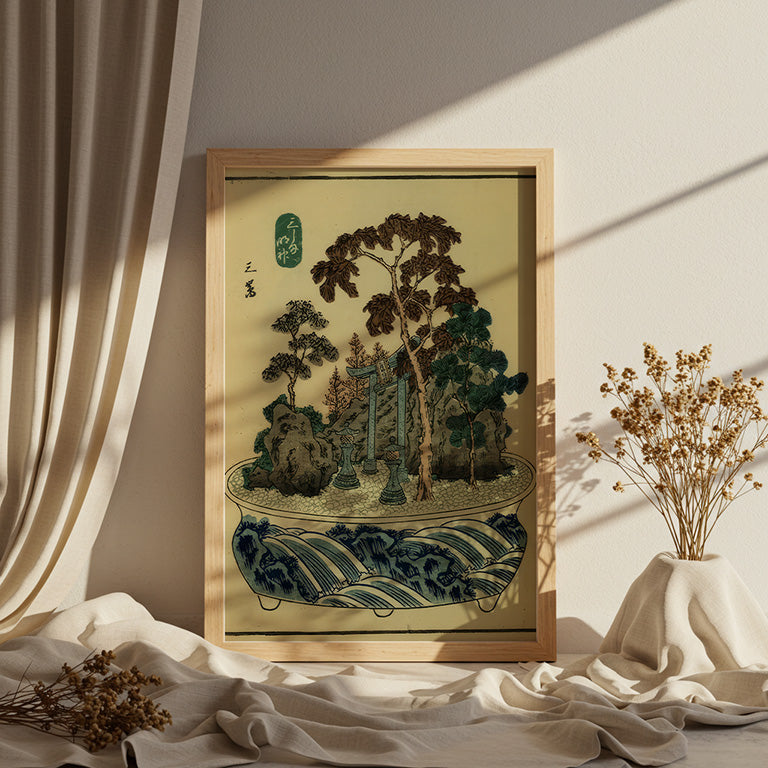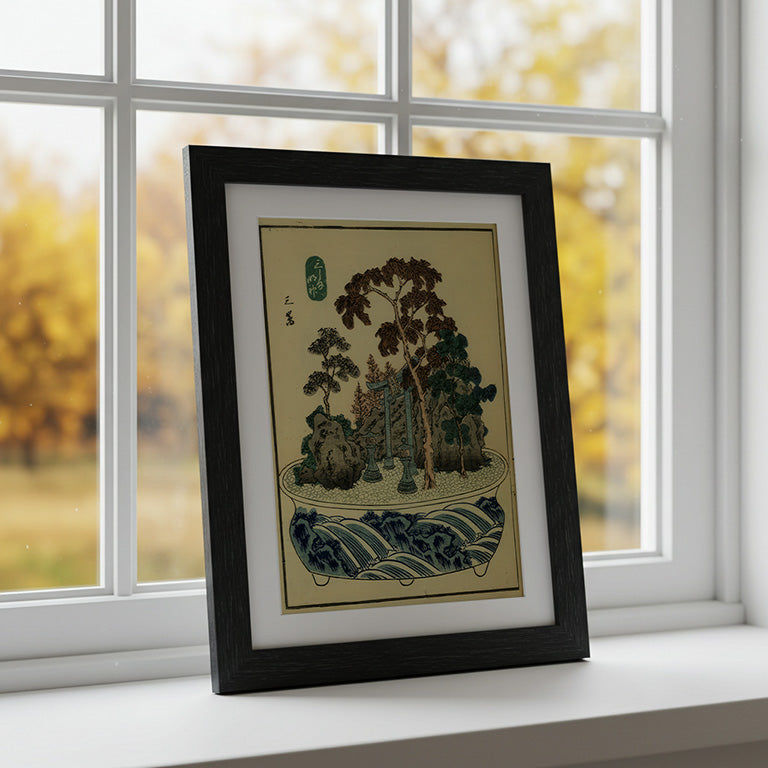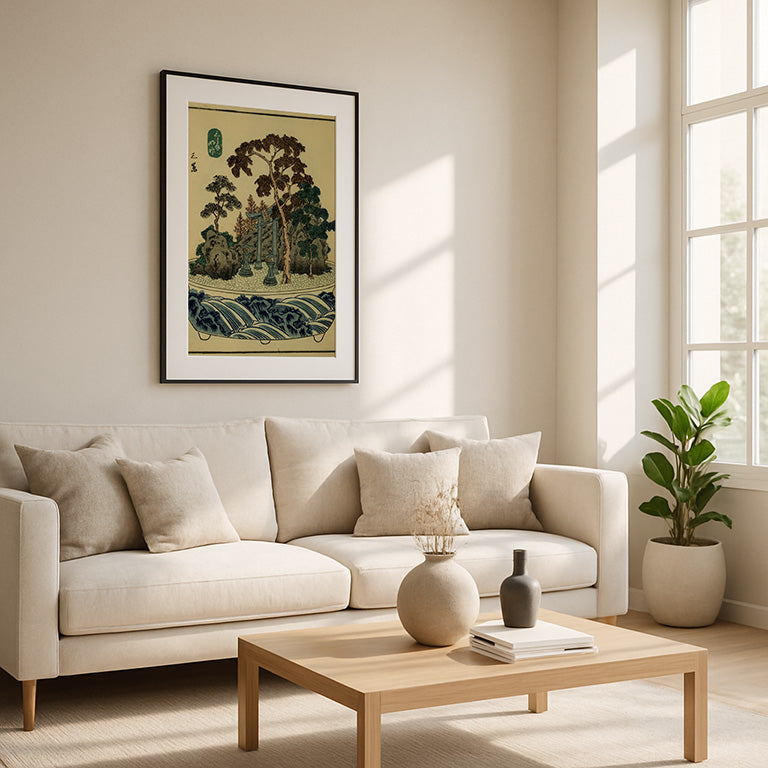"Mishima – Torii Garden" | Japanese Vintage Landscape
"Mishima – Torii Garden" | Japanese Vintage Landscape
No se pudo cargar la disponibilidad de retiro
"Torii Garden – Mishima" – Japanese Vintage Landscape Art Print | Digital Download (Tōkaidō Series, 1848)
Celebrate the harmony of nature and tradition with Torii Garden – Mishima, a serene digital art print from the historic 53 Stations of the Tōkaidō as Potted Landscapes (1848). This ukiyo-e piece features a miniature shrine gate (torii), stone lanterns, and lush trees, all enclosed in a decorative bonsai-style pot with stylized waves. A timeless Japanese landscape scene perfect for tranquil interiors.
Ideal for lovers of Japanese shrine art, printable landscapes, and vintage woodblock prints.
➤ High-resolution digital file
➤ Instant download for home printing
➤ Perfect for zen decor, Japanese wall art, or meditation spaces

Pixartiko Collective – Usage License
Prints allowed for personal use and resale only as physical products in local shops. Use in other physical goods permitted if pixartiko.com is credited when possible.
Digital resale, sharing, or publishing is strictly forbidden.
Designs are not public domain and cannot be distributed online.
© pixartiko.com – All rights reserved.
Print Sizes
🖼 Included Print Sizes (No Cropping Needed)
This high resolution digital file is optimized for printing at the following standard sizes, no cropping or borders required. Just download, print, and frame:
| Inches | Centimeters | Suggested Use |
|---|---|---|
| 20 x 30 | 50.8 x 76.2 | Gallery posters, premium wall art |
| 16 x 24 | 40.6 x 61.0 | Exhibition prints, home decoration |
| 12 x 18 | 30.5 x 45.7 | Standard posters, frame-ready prints |
| 10 x 15 | 25.4 x 38.1 | Photo enlargements, studio portraits |
| 8 x 12 | 20.3 x 30.5 | Portfolio prints, photo books |
| 6 x 9 | 15.2 x 22.9 | Small art prints, promotional material |
🖨️ All sizes are print-ready at 300 DPI, maintaining the original image ratio. No cropping or borders required.
📂 Your download includes:
- 1 high resolution JPEG file (Aspect Ratio: 2:3 - Portrait).
- Artistic Declaration Certificate in PDF.
- Free gift: The Ages of Painting guide — a visual journey through the history of painting.
🎨 Need a different size or format?
No problem! Just send me a message and I’ll be happy to adapt it for you.
🎧 Art Review
“Mishima”, from the series 53 Stations of the Tōkaidō as Potted Landscapes.
Utagawa Yoshishige, ca. 1848
In the delicate tableau titled Mishima, Utagawa Yoshishige once again demonstrates his remarkable ability to transpose the vastness of the Japanese landscape into a poetic microcosm. This entry in his mid-19th-century series 53 Stations of the Tōkaidō as Potted Landscapes encapsulates the sacred and serene essence of Mishima with quiet dignity and formal grace.
Dominated by a torii gate flanked by stone lanterns, Mishima evokes a timeless spiritual geography. The religious symbolism is neither overwhelming nor ornamental—it is harmoniously nestled within a meticulously balanced arrangement of rock formations, evergreens, and autumnal trees. Yoshishige renders these natural elements with painterly restraint, allowing the viewer to feel the breeze in the branches and the stillness in the shrine's approach.
What distinguishes Mishima is its layered use of framing. The torii serves as a portal within the image, while the pot itself—decorated with an elegant motif of stylized blue waves—functions as a boundary between imagination and reality. The landscape is both contained and uncontainable: an entire sacred world cupped in porcelain, transcending its own scale.
Yoshishige’s palette is intentionally subdued. Muted greens and browns evoke a natural calm, while the textures of stone, bark, and gravel are rendered with ukiyo-e precision. The composition draws from both the aesthetic sensibilities of bonkei (tray landscapes) and the Shinto reverence for the land itself, making Mishima not only a visual composition but a spiritual meditation.
Within this compact and contemplative scene, Yoshishige captures the quiet reverence that accompanies pilgrimage—not just to a physical shrine, but to an inner state of stillness. Mishima stands as a reminder that in Edo-period Japan, landscape was never merely scenery—it was an invocation of the sacred. And in this image, it continues to whisper across centuries.

Share
